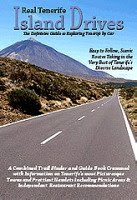There are 31 municipalities on Tenerife, most with at least one interesting town, many with more. However, no guide book to Tenerife, or any location for that matter, unless it is encyclopaedic in size, can include every single little town and village. Or if it tried, there would only be a few lines on each location and that wouldn’t really make it of much use to man (or in these enlightened times, woman) nor beast.
Clearly then, the thing to do is to opt for the most interesting places – but then with an island as famous, or infamous, as Tenerife doesn’t everybody already know the most interesting places.
Actually most don’t.
When most people think of Tenerife, the name Playa de Las Américas will probably spring to mind. More recently Costa Adeje has become a name bandied about by the media as evidence of the changing face of Tenerife. But the most well known places are not necessarily the most interesting.
In what has been pretty much a thirty year trend to promote Tenerife as a vision of a paradise based on year round sunshine, tour operators and, to some extent, the media continually overlook the Tenerife where the island’s traditional and cultural heart beats the strongest.
 Take the north coast. For centuries every explorer, writer and scientist worth his/ or her salt travelled by stagecoach from Santa Cruz to Tenerife’s most sophisticated town, La Orotava via charming little town's and villages. En route many stopped to visit historical or important geographical landmarks and then wrote about them in their journals. And yet I have read plenty of guidebooks which completely overlook these towns in favour of giving more page space to Playa de Las Américas.
Take the north coast. For centuries every explorer, writer and scientist worth his/ or her salt travelled by stagecoach from Santa Cruz to Tenerife’s most sophisticated town, La Orotava via charming little town's and villages. En route many stopped to visit historical or important geographical landmarks and then wrote about them in their journals. And yet I have read plenty of guidebooks which completely overlook these towns in favour of giving more page space to Playa de Las Américas.Now you can’t write a travel guide about Tenerife without mentioning PDLA, but everybody and their dog knows something about it, so it’s pointless to waste too many pages telling people what they already know.
With Going Native in Tenerife
So if we’ve dropped a small, purpose built resort built twenty years ago on the south coast in favour of a town where the likes of Sir Richard Burton was moved to wax lyrical, then we make no apologies for it. There’s a fascinating island out there, let us share it with you.




No comments:
Post a Comment